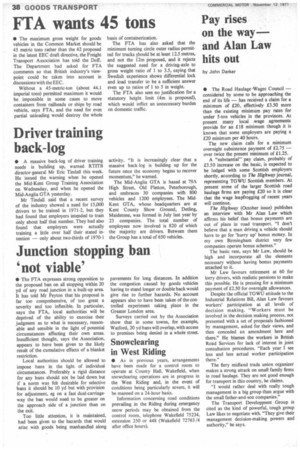Junction stopping ban not viable'
Page 40

If you've noticed an error in this article please click here to report it so we can fix it.
• The ETA expresses strong opposition to the proposed ban on all stopping within 20 yd of any road junction in a built-up area. It has told Mr Peyton that his proposal is far too comprehensive, of too great a severity and too inflexible. In particular, says the FTA, local authorities will be deprived of the ability to exercise their judgment as to what is necessary, reasonable and sensible in the light of potential circumstances affecting their own areas. Insufficient thought, says the Association, appears to have been given to the likely result of the cumulative effects of a blanket restriction.
Local authorities should be allowed to impose bans in the light of individual circumstances. Preferably a rigid distance for any bans should not be laid down but if a norm was felt desirable for selective bans it should be 10 yd but with provision for adjustment, eg on a fast dual-carriageway the ban would need to be greater on the approach side of a junction than on the eXit.
Too little attention, it is maintained, had been given to the hazards that would arise with goods being manhandled along pavements for long distances. In addition the congestion caused by goods vehicles having to stand longer or double back would give rise to further hazards. No account appears also to have been taken of the controlled experiment taking place in the Greater London area.
Surveys carried out by the Association show that in some towns, for example, Watford, 20 yd bans will overlap, with access to premises being denied in a whole street.










































































































































































































